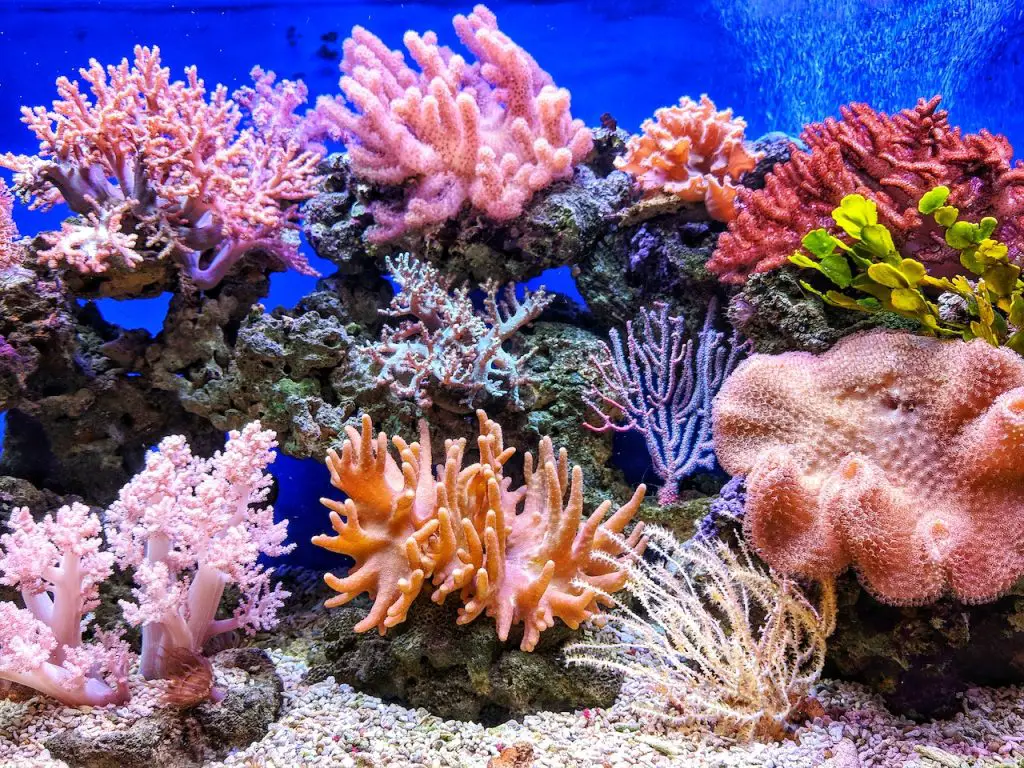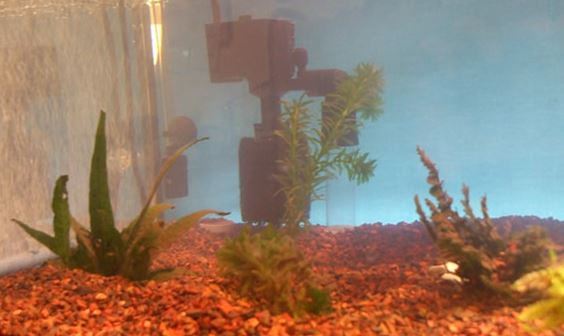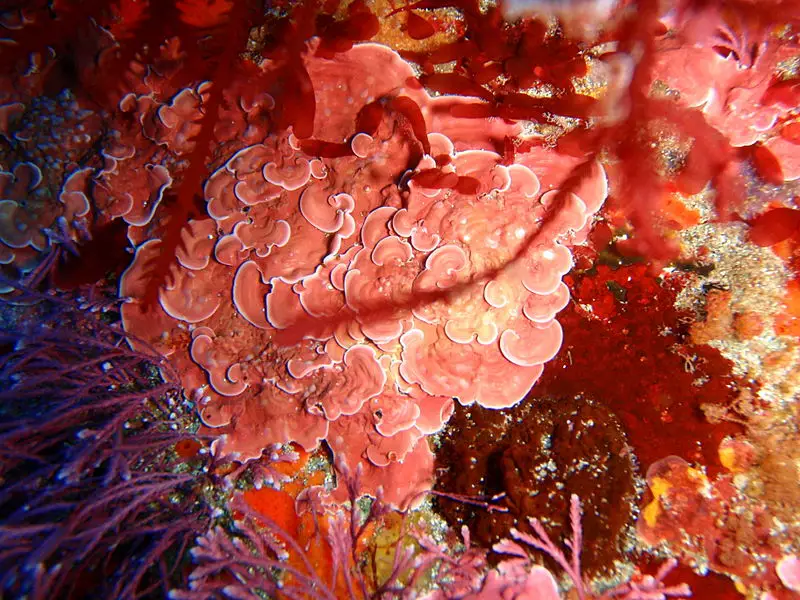Coral reefs are often called the rainforests of the sea, teeming with diverse and fascinating marine life. These underwater ecosystems support thousands of species, including various plants, which play vital roles in maintaining reef health.
This article will introduce 17 plants found in coral reefs and discuss their significant contributions to these complex habitats.
Plants in coral reefs perform various functions, including providing food and shelter for marine creatures and supporting the continuous growth of corals through photosynthesis.
In terms of species, these plants include seagrasses, macroalgae, and microscopic plant-like organisms called phytoplankton.
We will explore each of these species to understand better their relationship with other reef species and their importance in sustaining the delicate balance of coral ecosystems.
Importance of Plant Life in Coral Reefs
Plant life in coral reefs not only contributes to the exotic beauty of these ecosystems but also has essential functions. First, they serve as primary producers, converting sunlight into energy that supports the entire reef ecosystem.
Plants like seagrasses and algae also stabilize and grow reefs by providing substrate and structure for invertebrates, filter-feeding organisms, and other marine life.
Exploring 17 Fascinating Plant Species
Now that we have a better understanding of coral reefs and the significance of plant life within them let us delve into the fascinating world of 17 remarkable plant species that thrive in these ecosystems.
This section briefly overviews these great underwater plants, from colorful algae to vital seagrasses.
Zooxanthellae: The Tiny Powerhouses of Coral Reefs
The Primary Producers Algae, consisting of microalgae and macroalgae, are the primary producers of coral reefs. They convert sunlight into energy through photosynthesis, providing the base of the food chain for many marine organisms.
Macroalgae, such as seaweeds, offer shelter and breeding grounds for various species, while microalgae, like zooxanthellae, live symbiotically within coral polyps, providing them with nutrients.
Providing energy to coral through photosynthesis
Zooxanthellae play a crucial role in providing energy to their coral hosts through photosynthesis.
Photosynthetic organisms use sunlight to convert carbon dioxide and water into energy-rich molecules like glucose. Then, in the form of organic compounds, this energy is transferred to the coral polyps, providing them with the necessary nutrients to grow and thrive.
Zooxanthellae’s photosynthetic abilities play a significant role in the productivity of coral reefs.
It is estimated that they can provide up to 90% of the energy the coral requires in some cases, with the remaining energy obtained through heterotrophic feeding on tiny planktonic organisms.
The symbiotic relationship between zooxanthellae and coral
The relationship between zooxanthellae and their coral hosts is a prime example of mutualistic symbiosis. In this partnership, both parties benefit from one another’s presence.
As aforementioned, the coral polyps receive vital energy and nutrients from zooxanthellae through photosynthesis. In return, zooxanthellae reside within the coral’s protective tissues and have access to the necessary inorganic compounds for their photosynthetic processes.
This symbiosis is crucial for the survival of coral reefs, especially in nutrient-poor regions of the ocean. The relationship allows coral to grow in areas where they might otherwise be unable to survive, ultimately forming the complex and diverse ecosystems that are coral reefs.
Green Algae: The Colorful Carpet of the Reef
Role of green algae in coral reef ecosystems
Green algae play a crucial role in coral reef ecosystems by providing food for various marine organisms and contributing to the reef’s overall structure.
Their presence also facilitates photosynthesis, producing oxygen and absorbing carbon dioxide simultaneously. Additionally, green algae are essential in recycling nutrients within the coral reef environment.
Examples: Caulerpa racemosa, Halimeda, Acetabularia
There are numerous examples of green algae that contribute to the vibrant nature of coral reefs, including Caulerpa racemosa, Halimeda, and Acetabularia.
These unique species demonstrate the diversity in appearance and function of green algae on the coral reef.
| Species | Description |
|---|---|
| Caulerpa racemosa | Fast-growing green algae with feathery green fronds can form large carpets on the reef. |
| Halimeda | An important calcareous alga that contributes to reef growth and structure by producing limestone deposits. |
| Acetabularia | Characterized by its small, umbrella-like appearance, these green algae is sometimes called the “mermaid’s wineglass.” |
Unique features and appearances
Caulerpa racemosa boasts a distinctive appearance due to its branching, feather-like fronds. In addition, its ability to grow rapidly and create dense mats on the reef floor provides habitats and food sources for various marine life.
Moreover, it has the unique ability to regrow from just a tiny fragment, making it a hardy and resilient species.
Halimeda is characterized by its segmented, leaf-like structure comprising calcified plates, which play a vital role in reef formation. In addition, its green, flattened segments contain calcium carbonate, which contributes to the overall structure of the reef as the algae break down post-mortem.
Acetabularia, the “mermaid’s wineglass,” is a distinct, delicate-looking green algae with a single, slender stalk topped by a funnel- or umbrella-shaped disk. One of its most unique features is its unusual reproductive structure, which allows the entire algae to act as a single cell.
Brown Algae: A Diverse Group with Many Roles
Importance of brown algae in coral reef ecosystems
Brown algae, belonging to the Phaeophyceae class, are a diverse group of seaweeds that play significant roles in coral reef ecosystems. As primary producers, they contribute to the overall productivity and health of the reef by providing food, habitat, and shelter for various reef organisms.
Examples: Dictyota, Padina, Sargassum, Turbinaria
Some prominent examples of brown algae in coral reef ecosystems include Dictyota, Padina, Sargassum, and Turbinaria.
These species vary in size, shape, and ecology, but all contribute to the coral reef environment’s structural complexity and biological diversity.
Distinct appearances and contributions of each species
Dictyota is a branching brown alga that forms dense beds on the reef, providing habitat for numerous invertebrates and small fish. Its presence can serve as an indicator of a healthy coral reef ecosystem.
Padina has a distinctive fan-like or spiral shape and grows on rocks and dead coral surfaces. The calcium carbonate secreted by Padina helps them stabilize reef structures, while their thalli offer shelter to small invertebrates.
Sargassum species are known for their bushy and feathery appearance, creating complex habitats for marine organisms, including fish, crustaceans, and mollusks. In addition, as a keystone species in many coral reef systems, Sargassum provides a substrate for many epiphytic and epibiotic organisms.
Turbinaria species are characterized by their wide, flat blades or whorled growth forms. These algae contribute to reef-building by providing habitats for sessile invertebrates and promoting coral attachment through their calcification process.
Green Calcareous Algae: Building Blocks of the Reef
Green calcareous algae play a significant role in the coral reef ecosystem. These algae produce calcium carbonate deposits that contribute to the reef’s structure, making them essential for its growth and development.
Calcium carbonate deposits in green calcareous algae
Green calcareous algae are a group of photosynthetic organisms that deposit calcium carbonate, a primary component in coral reefs. The algae absorb minerals from the surrounding water and convert them into a solid form, creating strong, stable structures that aid in reef construction.
Examples: Udotea, Penicillus, Avrainvillea, Neomeris
Several notable species of green calcareous algae contribute to coral reef growth:
- Udotea: A leaf-like algae that grow in shallow water and forms a sub-layer of the reef.
- Penicillus: Characterized by its brush-like appearance, it plays a vital role in accumulating sand for the reef.
- Avrainvillea: This species forms fan-like structures, often found in sandy or muddy habitats around the reef.
- Neomeris: With its tube-like structure, Neomeris contributes to the overall complexity of the reef habitat.
Contribution of each species to the reef’s structure
These algae species play unique roles in coral reef construction:
| Species | Contribution to the Reef |
|---|---|
| Udotea | Provides a sub-layer foundation for the reef, enhancing stability |
| Penicillus | Traps and accumulates sand, promoting sediment buildup and reef growth |
| Avrainvillea | Increases reef surface area and provides additional habitats for marine life |
| Neomeris | Helps create a complex habitat structure, encouraging biodiversity |
Each of these species of green calcareous algae contributes to the formation and stability of coral reefs, making them vital ecosystem components.
Seagrasses: The Underwater Meadows
Seagrasses, a group of flowering plants adapted to live underwater, play an essential role in coral reefs. They stabilize the seabed, reduce coastal erosion, and improve water clarity. Seagrasses also function as nurseries for young fish and invertebrates and provide food for various species, such as sea turtles.
Syringodium isoetifolium, Thalassia hemprichii, Halophila ovalis, Enhalus acoroides
Several seagrass species are found in coral reef environments, including Syringodium isoetifolium, Thalassia hemprichii, Halophila ovalis, and Enhalus acoroides.
Each species has unique characteristics and habitat preferences, making them significant contributors to the diverse underwater meadows found in coral reefs.
Unique features and habitat preferences of each seagrass species
Syringodium isoetifolium is commonly known as manatee grass due to its cylindrical, spaghetti-like leaves. It thrives in shallow waters with sandy or muddy sediments, often forming dense beds in seagrass meadows.
Thalassia hemprichii, also known as turtle grass, has long, strap-shaped leaves and forms extensive meadows in a calm, shallow waters. This species can tolerate various salinity and temperature conditions, making it highly adaptable to multiple coral reef habitats.
Halophila ovalis has small, oval-shaped leaves and is often found in deeper waters. This species is considered a pioneer seagrass, colonizing disturbed areas and serving as a significant food source for marine herbivores such as dugongs and turtles.
Enhalus acoroides, or tape seagrass, have broad, ribbon-like leaves that can reach several meters long. This species prefers fine, silty sediments and can be found in various coral reef environments, including seagrass beds, lagoons, and reef flat margins.
Red Mangroves: Coastal Protectors, Essential Plants for Coastal Ecosystems
Mangroves, trees, and shrubs adapted to live in saltwater environments are often found along the edges of coral reefs.
Their root systems protect against storm surges and erosion while offering critical habitats for marine organisms.
Mangroves also contribute to improved water quality by filtering pollutants and trapping sediments.
Role in protecting coral reefs: stabilizing shorelines, filtering water.
Red mangroves contribute to the protection of coral reefs in various ways. Their extensive root systems, known as prop roots, help stabilize shorelines and prevent erosion.
They also provide a natural barrier to waves and storm surges, reducing the impact of coastal storms on vulnerable habitats.
Additionally, red mangroves serve as efficient water filters by trapping sediment and pollutants, preventing them from reaching the coral reefs and maintaining the water quality necessary for these ecosystems to thrive.
The Unique Features of Red Mangroves, Such as Their Prop Roots
Red mangroves have several unique features, such as:
- Prop roots: These aerial roots extend from the tree trunk and provide support and stability to the tree in the soft, muddy soils of coastal areas. They also help the tree absorb oxygen in low-oxygen environments.
- Viviparous seeds: Unlike most plants germinating in the soil, red mangroves grow seeds while still attached to the parent tree. These seedlings, called propagules, drop into the water and can float long distances before taking root in the mud.
- Salt tolerance: Red mangroves have specialized cells that remove excess salt from the water they absorb, allowing the plant to survive in the saline conditions of coastal regions.
Together, these features contribute to the important role of red mangroves in maintaining healthy coral reef ecosystems.
The Bigger Picture: Plant Life and Coral Reef Conservation
Plant life plays a crucial role in maintaining the health and stability of coral reefs.
So as we discuss the 17 plants found in coral reefs, let’s examine the bigger picture of their interconnectedness and why conservation is vital.
The interconnectedness of Plant Life and Overall Coral Reef Health
Plant life in coral reefs, such as seagrasses and algae, serves as the primary producers of organic matter.
They provide essential nutrients for the coral polyps and the ecosystem’s vast array of marine life. Additionally, plants help stabilize the reef structure and prevent erosion.
Threats Facing Coral Reefs: Climate Change and Pollution
Climate change and pollution are two significant threats impacting coral reefs worldwide.
Rising ocean temperatures and ocean acidification, both consequences of climate change, can lead to coral bleaching, reducing their ability to survive and reproduce.
Pollution, such as agricultural runoff and plastic waste, contributes to water quality degradation, inhibiting coral and plant growth.
The Importance of Conserving Coral Reefs for Future Generations
Conserving coral reefs is vital for the marine organisms that depend on them and us.
They serve as nurseries for fish, provide food and resources for coastal communities, and protect coastlines from erosion and storm damage.
Maintaining healthy plant life in coral reefs is integral to preserving these ecosystems for generations.
Some ways to conserve coral reefs include:
- Reducing greenhouse gas emissions to mitigate climate change
- Implementing sustainable land use practices to minimize pollution
- Establishing marine protected areas to safeguard critical habitats
- Encouraging responsible tourism practices that reduce ecological impact
We can help protect and preserve the valuable coral reef ecosystems and their plant life by working together to address these challenges.
Conclusion:
In this article, we discussed 17 remarkable plant species that inhabit coral reefs. These plants are essential to the ecosystem, providing nutrients and support for marine life. Some notable examples include:
- Seagrasses
- Red algae
- Green algae
- Coraline algae
- Mangroves
Encouragement to continue learning about coral reefs
Understanding the complex relationships between these plant species and the coral reef ecosystem is crucial.
Coral reefs are essential for marine life and humans, providing coastal protection, supporting fisheries, and offering recreation and eco-tourism opportunities.
We encourage you to explore more about coral reefs and their fascinating inhabitants.
Invitation to take action to protect and conserve coral reefs and plant life
Lastly, it is crucial to acknowledge the severe threats harming coral reef ecosystems, such as climate change, pollution, and unsustainable fishing practices. You can help protect and conserve coral reefs and their valuable plant life by:
- Supporting organizations focused on reef protection and restoration.
- Reducing your carbon footprint
- Using reef-safe sunscreens and reducing plastic waste
Let’s work together to preserve these biodiverse marine environments for future generations.



